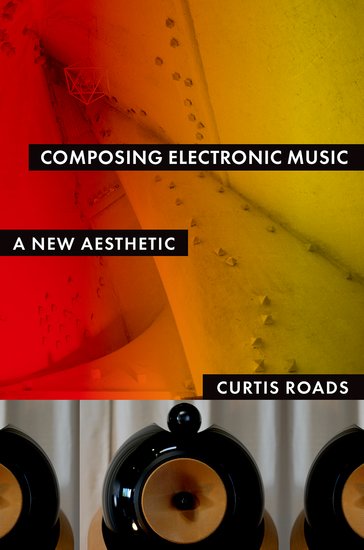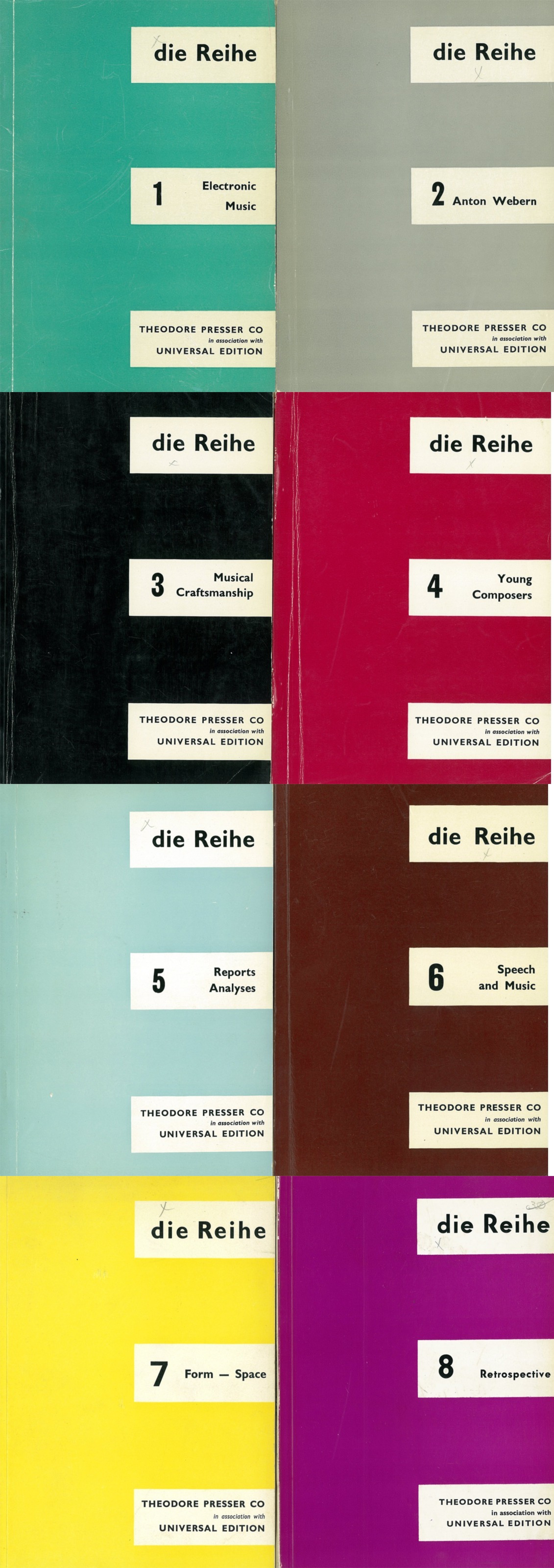Michel Chion: La musique du futur: a-t-elle un avenir? (1977) [French]
Filed under book, magazine | Tags: · electroacoustic music, electronic music, interview, music, music criticism, musique concrète

Entretiens menés en 1975-76 auprès de compositeurs/trices de tous horizons, dont Pierre Schaeffer, Luc Ferrari, Luciano Berio, René Bastian, Ghédalia Tazartès, Louise Garriépi, Klaus Ager, Ilhan Mimaroglu, Laurie Spiegel, etc.
Publisher Institut national de l’audiovisuel (INA)/GRM, Paris, 1977
Cahiers Recherche/Musique, 4
148 pages
via author
Curtis Roads: Composing Electronic Music: A New Aesthetic (2015)
Filed under book | Tags: · composing, composition, electroacoustic music, electronic music, granular synthesis, music, rhythm, sound, technology

“Electronic music evokes new sensations, feelings, and thoughts in both composers and listeners. Opening the door to an unlimited universe of sound, it engages spatialization as an integral aspect of composition and focuses on sound transformation as a core structural strategy. In this new domain, pitch occurs as a flowing and ephemeral substance that can be bent, modulated, or dissolved into noise. Similarly, time occurs not merely as a fixed duration subdivided by ratios, but as a plastic medium that can be generated, modulated, reversed, warped, scrambled, and granulated. Envelope and waveform undulations on all time scales interweave to generate form. The power of algorithmic methods amplify the capabilities of music technology. Taken together, these constitute game-changing possibilities.
This convergence of technical and aesthetic trends prompts the need for a new text focused on the opportunities of a sound oriented, multiscale approach to composition of electronic music. Sound oriented means a practice that takes place in the presence of sound. Multiscale means an approach that takes into account the perceptual and physical reality of multiple, interacting time scales-each of which can be composed. After more than a century of research and development, now is an appropriate moment to step back and reevaluate all that has changed under the ground of artistic practice.
Composing Electronic Music outlines a new theory of composition based on the toolkit of electronic music techniques. The theory consists of a framework of concepts and a vocabulary of terms describing musical materials, their transformation, and their organization. Central to this discourse is the notion of narrative structure in composition-how sounds are born, interact, transform, and die. It presents a guidebook: a tour of facts, history, commentary, opinions, and pointers to interesting ideas and new possibilities to consider and explore.”
Publisher Oxford University Press, 2015
ISBN 9780195373233, 0195373235
xxvii+480 pages
Reviews: Nick Collins (Music and Letters, 2016), Gregory Taylor (Cycling74, 2016), Warren Burt (SoundBytes, 2016).
PDF (24 MB)
Companion website
Die Reihe: A Periodical Devoted to Developments in Contemporary Music, 1-8 (1957-1968)
Filed under magazine | Tags: · electroacoustic music, electronic music, music, music criticism, music theory, serialism

Die Reihe was a German-language music journal, edited by Herbert Eimert and Karlheinz Stockhausen between 1955 and 1962. An English edition was published, under the original German title, between 1957 and 1968.
“The journal, whose title means “The Row” or “The Series”, owes its genesis to the founding of the electronic music studio of the Nordwestdeutscher Rundfunk (NWDR) in Cologne (later WDR) under the influence of Werner Meyer-Eppler, and the realisation that technology was becoming an important element in the work of younger composers. The contributions from composers working in the studio were frequently based on their projects there, and in the early stages of competing with the radio-play department for resources, Eimert found having such a journal useful. It helped to raise the studio’s educational and academic profile above the entertainment aims of other departments of the radio station, as well as providing opportunities to young authors for publication.”
Contributors include György Ligeti, Mauricio Kagel, John Cage, Pierre Boulez, and others.
Reviews: Dika Newlin (of 1st DE issue, Notes, 1956), Dika Newlin (of 1st EN issue, Notes, 1958), Dika Newlin (of 2nd EN issue, Notes, 1959), Dika Newlin (of 3rd EN issue, Notes, 1960), George Perle (of 3rd EN issue, J Music Theory, 1960), Dika Newlin (of 5th EN issue, Notes, 1962), P.A.E. (of 5th EN issue, Music & Letters, 1962).
Commentary: John Backus, “Die Reihe—A Scientific Evaluation” (Perspectives of New Music, 1962).
Tables of contents of German edition
Wikipedia
Edited by Herbert Eimert and Karlheinz Stockhausen
Publisher Theodore Presser, Bryn Mawr, PA, with Universal Edition, London, 1957-1968.
800 pages
Each of the eight issues was dedicated to a different theme, announced in a subtitle (with links to sections in PDF):
Electronic Music, 1957, vi+62 pp
Anton Webern, 1958, vii+100 pp
Musical Craftsmanship, 1959, 88 pp
Young Composers, 1960, 135 pp
Reports—Analyses, 1961, 121 pp
Speech and Music, 1964, 95 pp
Form—Space, 1964, 87 pp
Retrospective, 1968, 98 pp
All 8 issues in single PDF (17 MB, no OCR)
Comment (1)
